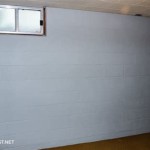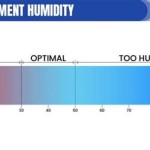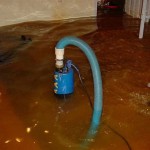Do You Need A Vapor Barrier For Basement Walls
A vapor barrier is a material that resists the passage of water vapor. It is typically used in construction to prevent moisture from entering a building from the ground or from the air. Vapor barriers are often used in basements, crawl spaces, and attics.
There are two main types of vapor barriers: Class I and Class II. Class I vapor barriers are impermeable to water vapor, while Class II vapor barriers are semi-permeable. Class I vapor barriers are typically made of polyethylene or foil, while Class II vapor barriers are typically made of kraft paper or latex paint.
The type of vapor barrier that is right for your basement will depend on the climate in your area and the moisture level in your basement. If you live in a humid climate or if your basement is prone to flooding, you will need a Class I vapor barrier. If you live in a dry climate and your basement is not prone to flooding, you may be able to get by with a Class II vapor barrier.
Here are some of the benefits of using a vapor barrier in your basement:
- Prevents moisture from entering your basement from the ground or from the air
- Reduces the risk of mold and mildew growth
- Improves the air quality in your basement
- Makes your basement more comfortable and livable
If you are considering installing a vapor barrier in your basement, be sure to consult with a qualified contractor to discuss the best option for your home.
Do You Need a Vapor Barrier for All Basement Walls?
Not all basement walls need a vapor barrier. In general, you only need a vapor barrier if your basement is prone to flooding or if you live in a humid climate. If your basement is dry and well-ventilated, you may not need a vapor barrier.
Here are some factors to consider when deciding whether or not you need a vapor barrier for your basement walls:
- The climate in your area
- The moisture level in your basement
- The type of construction of your basement walls
- The presence of any water leaks or flooding
If you are unsure whether or not you need a vapor barrier for your basement walls, it is always best to consult with a qualified contractor.
How to Install a Vapor Barrier on Basement Walls
Installing a vapor barrier on basement walls is a relatively simple process. However, it is important to follow the manufacturer's instructions carefully to ensure that the vapor barrier is installed properly.
Here are the steps on how to install a vapor barrier on basement walls:
- Clean the basement walls to remove any dirt or debris.
- Apply a layer of vapor barrier adhesive to the basement walls.
- Unroll the vapor barrier and press it into the adhesive.
- Overlap the vapor barrier at the seams by at least 6 inches.
- Seal the seams with vapor barrier tape.
- Trim any excess vapor barrier.
Once you have installed the vapor barrier, you can finish your basement as desired.

Do I Need A Vapor Barrier In My Basement Epp Foundation Repair

Be Sure To Use A Moisture Barrier When Building Out Your Basement

How To Install A Basement Vapor Barrier Hgtv

Basement Wall Vapor Barrier System In Seattle Portland Tacoma Retardant Or Wa

Fixing Moldy Basements Vapor Barriers Can Be A Bad Idea

No Vapor Retarders On Interior Side Of Air Permeable Foundation Insulation Building America Solution Center

Understanding Vapor Barriers The Green Cocoon

Vapor Barriers For Basements And Crawlspaces Greenbuildingadvisor

Davenport Thermaldry Vapor Barrier Midamerica Basement Systems

Davenport Thermaldry Vapor Barrier Midamerica Basement Systems
See Also








